Several years ago, I went to visit my 92-year-old grandmother (嫲嫲) after she had suffered a massive stroke.
At 92, sitting in a wheelchair, the left side of her body was paralyzed.
She had aphasia (loss of ability to understand or express speech) and dysphagia (swallowing difficulties) caused by brain damage. She did not recognize myself or my sister.
She could no longer feed herself and required feeding assistance. The stroke caused dysarthria, the inability for her to control her tongue and mouth muscles. Coughing and choking during eating was common.
All food had to be pureed to the appropriate consistency, a common practice used in hospitals and long-term care facilities to ensure the food is safe to eat.
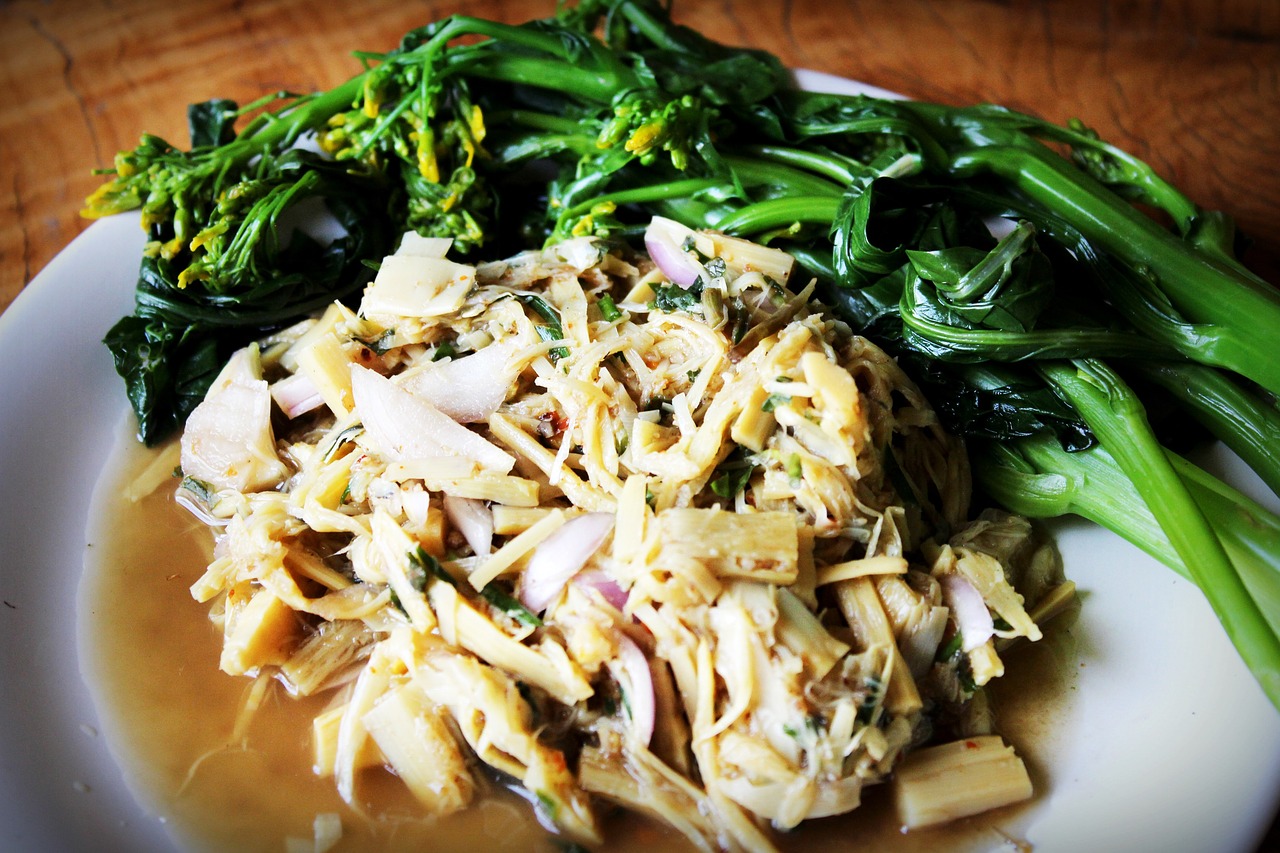
Meals were still the same familiar Chinese meals she was used to: Rice, vegetables (菜 aka “choy”) fish and sometimes chicken pureed to be made safe.
She was well taken care of, but I remember how difficult (and sometimes scary) it was for her to eat. I didn’t know what it was called at the time, but the choking and coughing from eating often resulted in aspiration – when food and fluids goes into the lungs as a result of the inability to swallow properly. Aspiration is dangerous, because it can lead to aspiration pneumonia – a condition where the fluids and foods get into the lungs causing an infection.
We still ate all meals together in her apartment. With my sister, grandmother and her caregiver feeding her.
Despite not having a great appetite, I remember she ate because she knew food was important.
Fruit for Dessert

After dinner, the traditional Chinese way was to eat fruit. Oranges are popular and are often used as a palette cleanser after a meal. However, oranges, with all their stringy bits were no longer safe because they were now a choking hazard.
Enter the papaya. A fruit popular in Asia and other tropical climate countries, this is a fruit often enjoyed by my family.
With all her chewing, choking and swallowing issues, papaya was only fruit she enjoyed and was able to safely eat when pureed to the appropriate consistency.
Papaya Nutrition and Genetic Engineering

Papaya is a healthy fruit. It’s high in: folate, vitamin A, magnesium, copper, pantothenic acid (vitamin B5) and fibre.
But did you know: The majority of papaya produced in the world is GMO?
Papaya is genetically modified because the papaya plant was almost completely destroyed by the Papaya Ringspot Virus (PRSV), the most destructive virus of the papaya crop. It nearly destroyed all of farmers’ papaya crops in the 90s in Hawaii, China and other parts of the world.
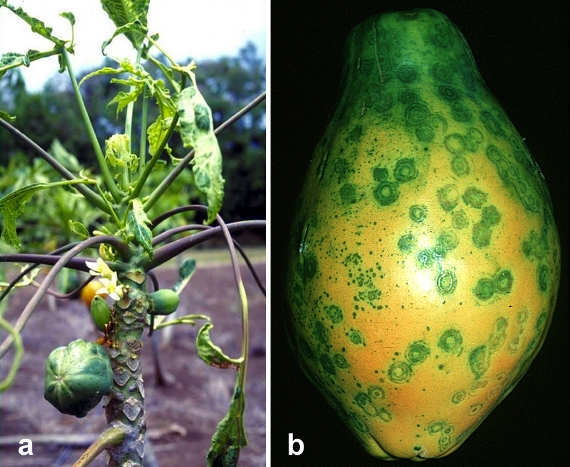
Photos – A: Papaya Ringspot Virus on papaya plant B: Papaya Ringspot Virus on the fruit
In the 1990s, a plant technology was developed to save the papaya. This was known as transgenesis, a method of creating genetic variation. In transgenesis, the addition of desirable genes from another species gives the result of a plant with new and beneficial characteristics.
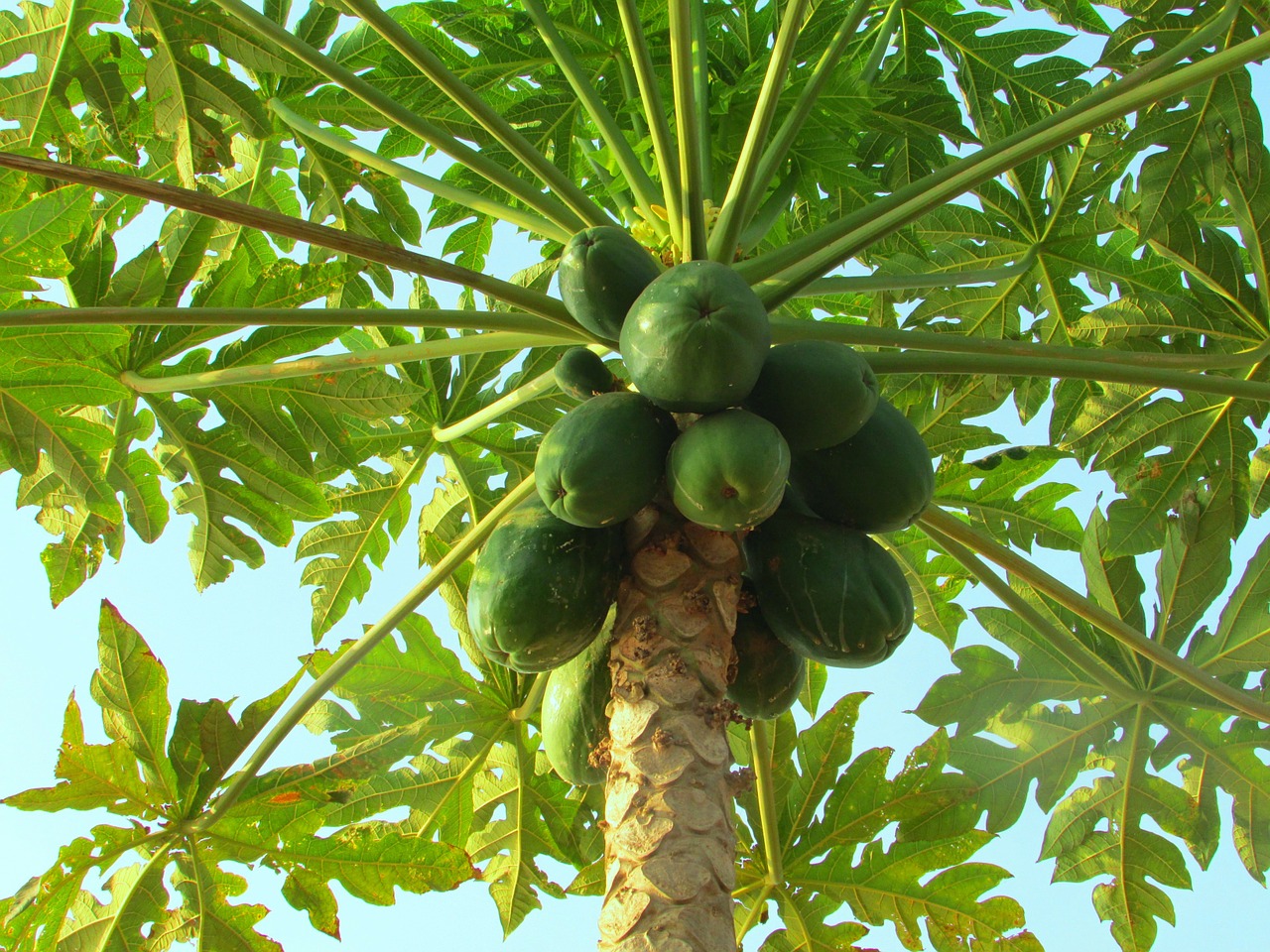
Photo: Healthy papaya fruit on the plant.
The University of Hawaii developed a papaya plant that contained a gene which gave this variety of papaya resistance to the ringspot virus. Find the full dissertation here. Thus, the papaya crop was saved through this plant science innovation, rebounding papaya production.
Marketing Strategy: GMO-FREE and Organic
It’s interesting because I’ve done a lot of research, both on organic and genetically modified papaya. After all, it was a large percentage of my grandmother’s food intake!
As a licensed registered dietitian with 11 years of university level education, I know how to look for evidence-based scientific research. There isn’t much research on organic papaya, except for blogs and web articles that preach how to avoid the GMO papayas and which organic varieties to buy. Also, YouTube videos such as this one, which I find misleading – pitting one method of agriculture over another. Did he not consider that one papaya was just riper, therefore sweeter and more orange than the other one?

There are two things I have gathered about anti-GMO activism. First, is that it appears to misunderstand the science behind transgenesis and other types of genetic engineering.
Second: It runs on fear marketing, described by none other than digital marketing genius Neil Patel.
Lots of health and wellness bloggers, self-proclaimed health experts and activists preach only buying organic and GMO-free food. They spread fear of food and genetic modification. It’s genius marketing!
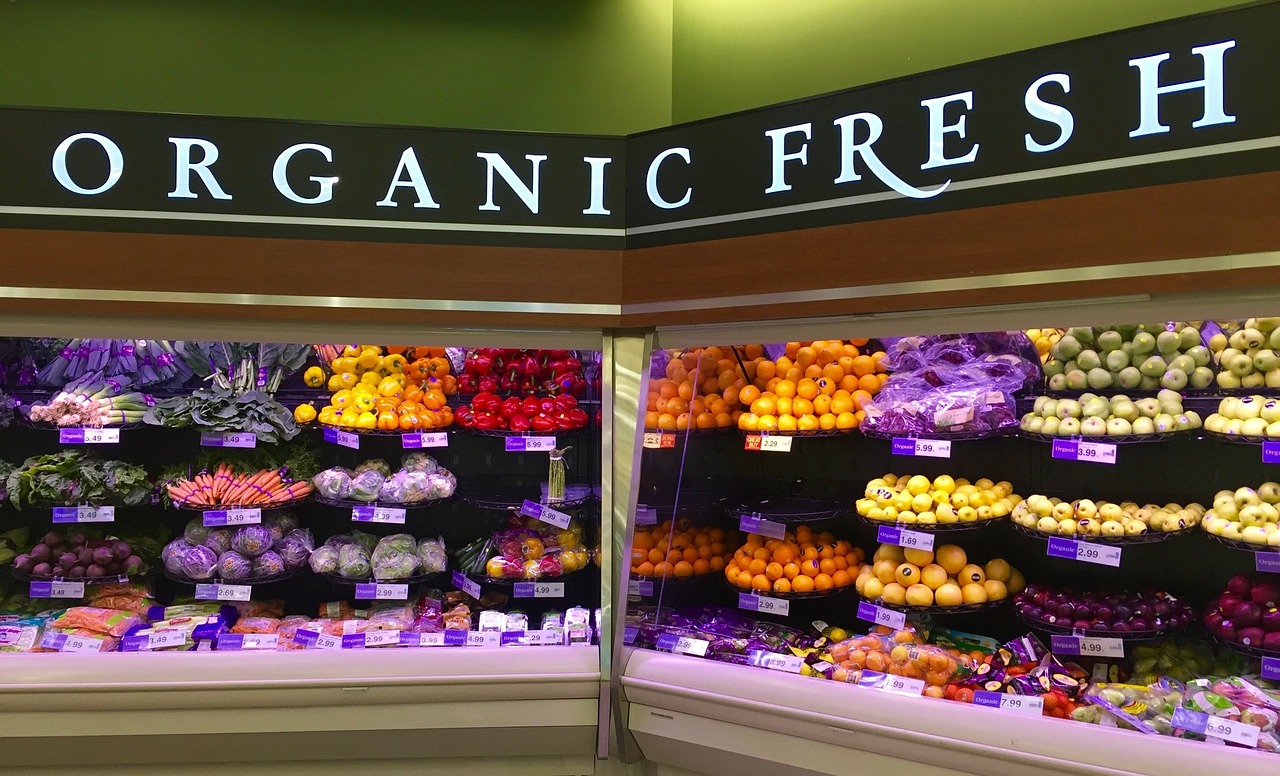
Organic and GMO-free papaya are more expensive and difficult to find than conventional varieties. This is especially here in Canada – where papaya needs to be imported. There is also a common myth that organic means pesticide free. Organic farming production also uses pesticide, as all farmers/growers (organic or conventional) need to control for pests in the environment.
Higher Price ≠ Better for You
Lots of people fall into this trap as well: Thinking that the higher cost of food, the healthier and more superior it is.
Wrong.
Organic and non-GMO labels (often sold at a markup) have become marketing labels to make consumers think those products are superior and healthier.
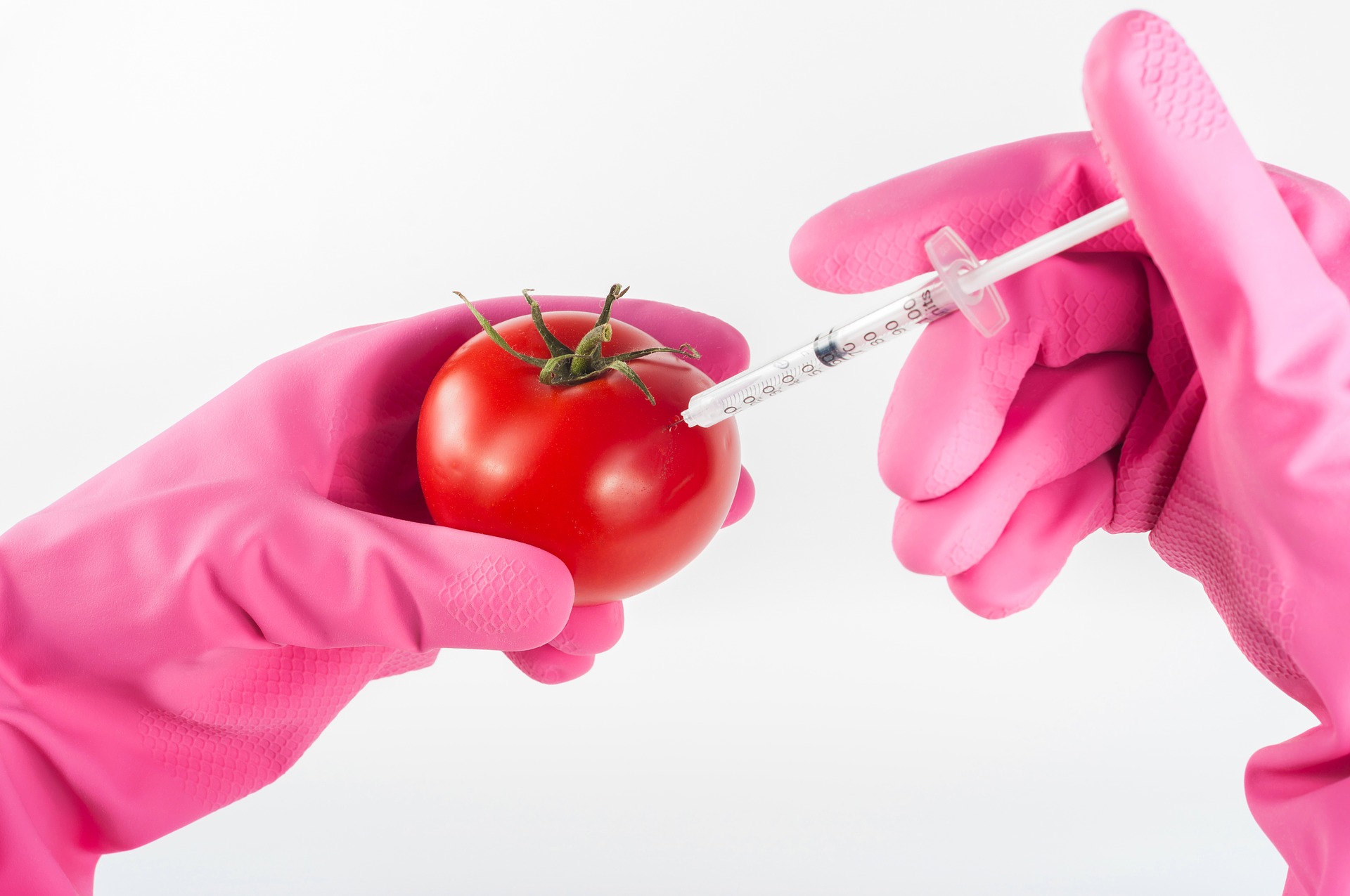
This is one of the most common images that pop up when you Google GMO foods. I find it funny, because this is not how genetically modification works!
What people don’t realize is genetically modified engineering technology takes years of scientific research and testing to ensure effectiveness and safety before it even reaches the grocery stores for us the consumer.
Bottom Line
Genetic modification saved the beloved delicious papaya. And because the ringspot virus wiped out so many papaya crops around the world, it is being adopted in other countries.
Knowing that is good enough for me. And for my grandmother!
It’s always an honour to mix storytelling with science for you. Thank you for reading and following my blog! For timely blog updates, sign up for my newsletter here. Follow me @nutritionartist on Instagram, Facebook and Twitter! – Michelle
Do you agree? Disagree? Comment below and let me know!

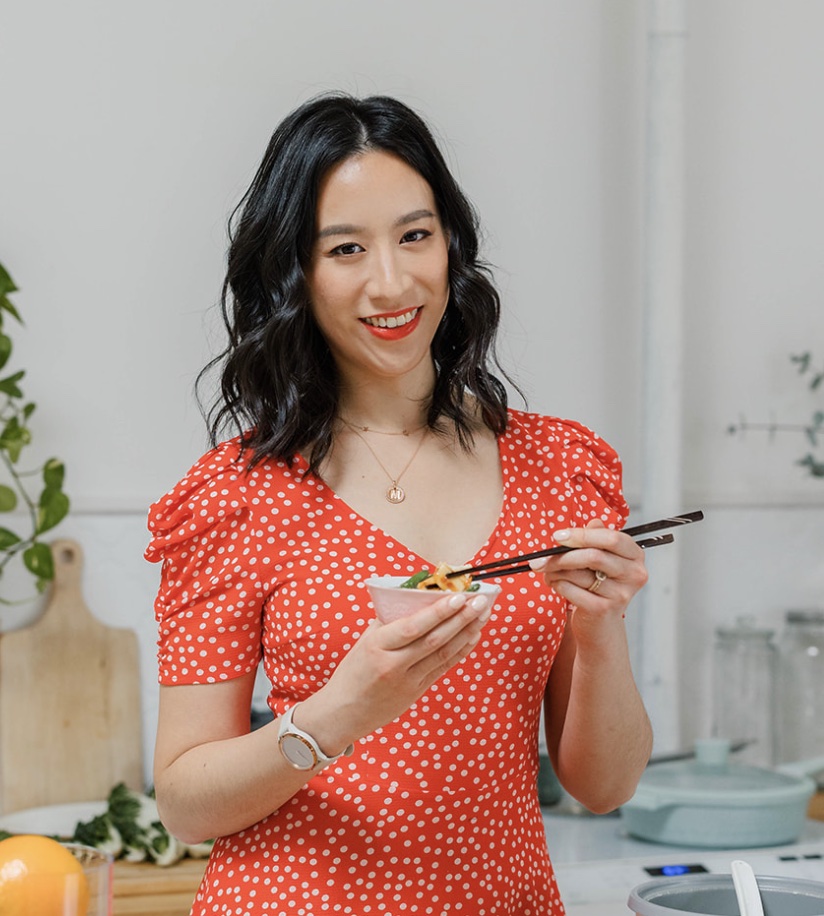
You’re right on Michelle. Best wishes to your grandmother and to the family.
Thank you, Kevin. I appreciate your comment!
Excellent article Michelle! GMOs really are misunderstood. People need to learn about them and understand how they are developed before dismissing them. It all boils down to education and demystification.
Thanks Nathalie! They really are. I learn more all the time and am fascinated by what we can do to save plants/food from disease, pests, etc. Thank you for commenting!